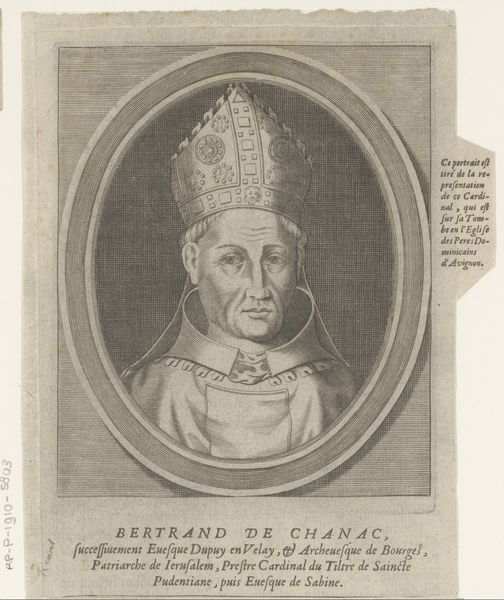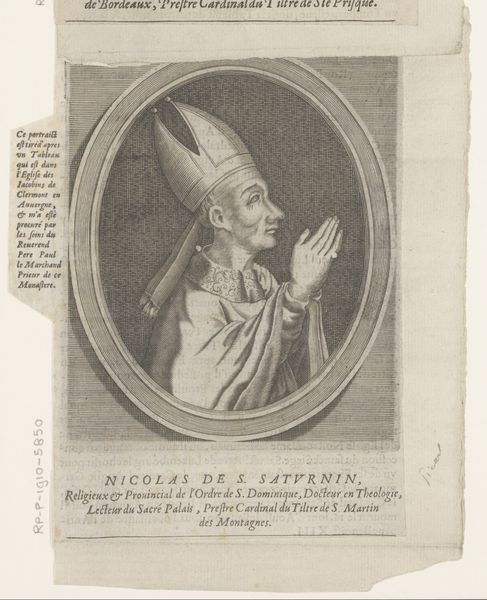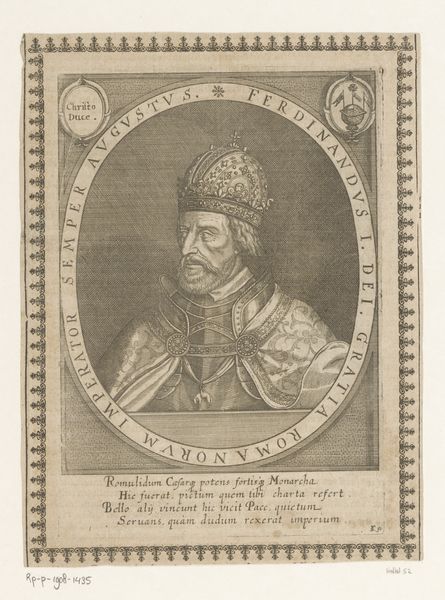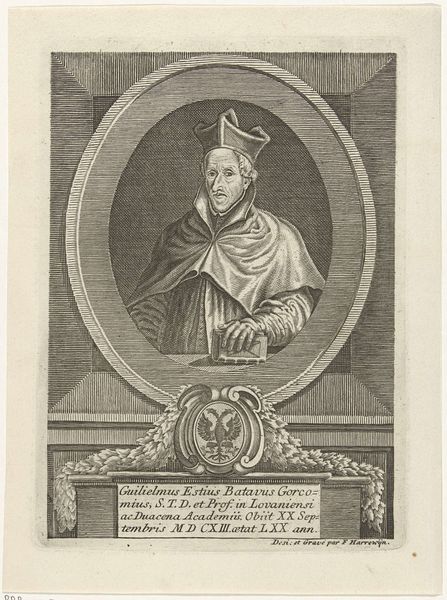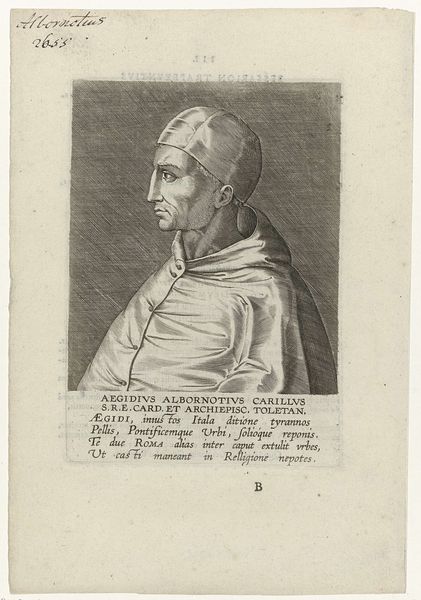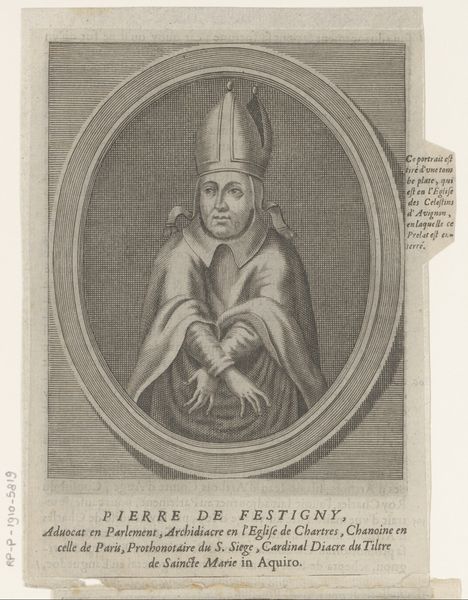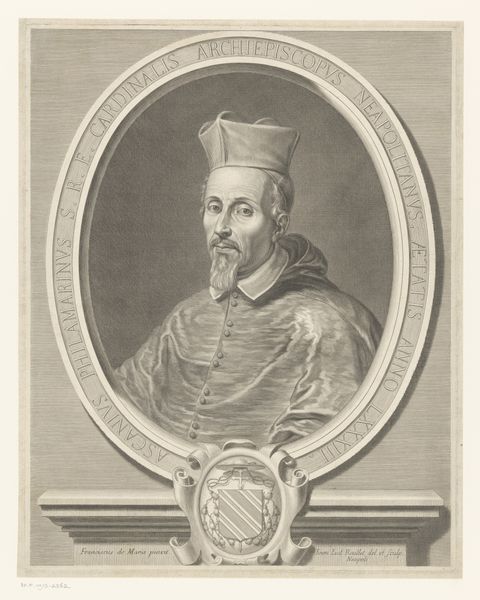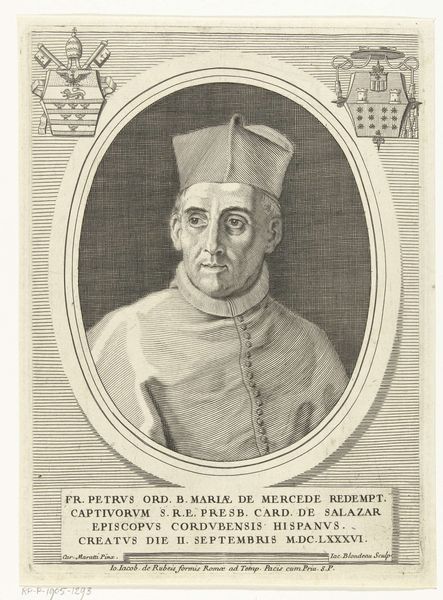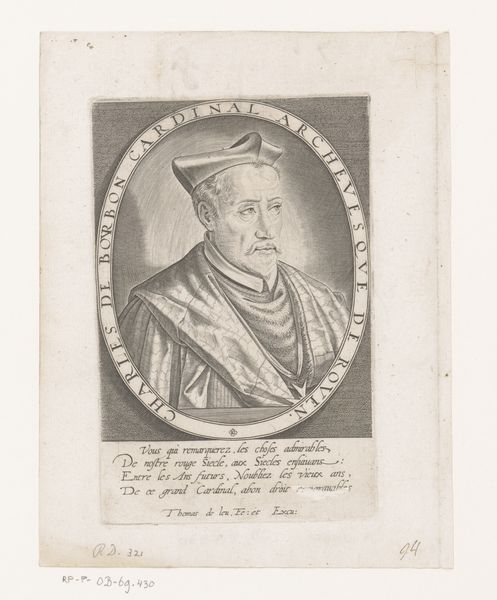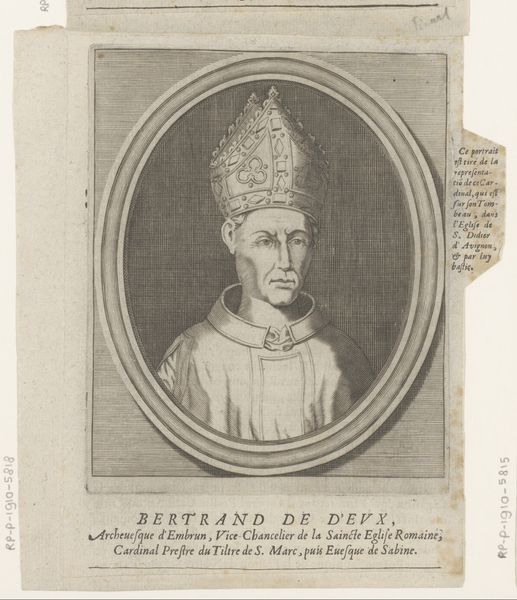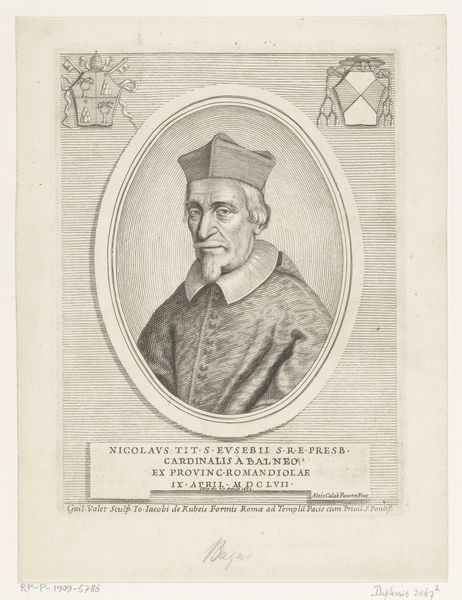
print, engraving
#
portrait
#
baroque
# print
#
history-painting
#
academic-art
#
engraving
Dimensions: height 173 mm, width 139 mm
Copyright: Rijks Museum: Open Domain
Editor: Here we have Etienne Picart's "Portret van Pierre de Monteruc," an engraving dating back to 1660. The subject, framed by an oval, appears quite stern, even imposing. How might you approach interpreting this print? Curator: Through a formalist lens, one notices first the line work. Observe how the density and direction of the engraved lines create areas of shadow and light, defining the contours of Monteruc's face and mitre. Consider also the geometric tension inherent in the composition: the oval frame containing a subject largely defined by angular shapes and lines. Do you notice any specific geometric relationships? Editor: Well, the oval certainly softens the rigidness of his clothing and hat, creating a visual hierarchy that leads the eye toward the center. Curator: Precisely. Moreover, reflect on the materiality itself. The print medium, with its inherent limitations, forces a certain abstraction. The textures we perceive are illusions created by the strategic arrangement of lines, revealing the hand of the artist in translating form into a two-dimensional plane. The formal qualities draw attention to the surface and the artifice involved in representation. Editor: That’s fascinating. So rather than focusing on Monteruc's identity or the historical context, we are guided to consider the artistic decisions made in its creation. I had not considered how the medium itself shapes our perception. Curator: Indeed, this shift of focus provides new insights into the artist's skill and purpose. A study of form enables a nuanced understanding of the artistic intention.
Comments
No comments
Be the first to comment and join the conversation on the ultimate creative platform.
